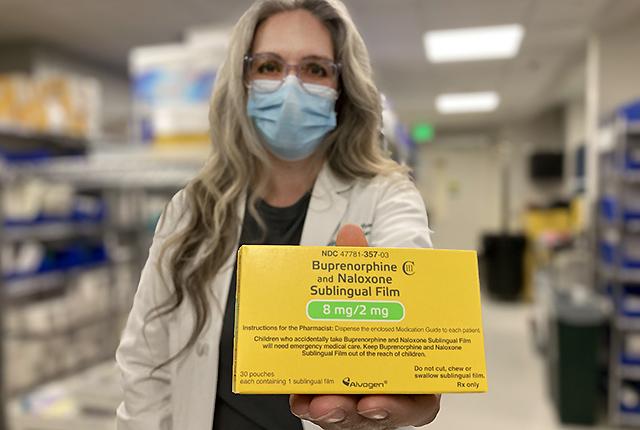
A study of more than 25,000 Washingtonians who had received their first prescription of the opioid addiction-treatment medication buprenorphine found that they used it, on average, for 84 days – much less than the minimum care guideline of six months.
The researchers also found that many people needed two or more care episodes (i.e., consecutive prescriptions without an interruption) before they stayed on the life-saving drug for a longer span.
“The data shows that people are trying to manage their addiction by seeking buprenorphine multiple times,” said Caleb Banta-Green, principal research scientist at the Addictions, Drug & Alcohol Institute at the University of Washington School of Medicine. “To us, this means that people with opioid-use disorder shouldn’t give up in frustration when they relapse – and neither should the clinicians who prescribe buprenorphine.”
He was lead author of the study, published today in the Journal of Substance Abuse Treatment.
Buprenorphine has been used effectively for almost two decades to treat people with opioid-use disorder. The drug can support long-term recovery and has been shown to significantly reduce mortality, particularly when people can access and use it long-term.
Buprenorphine access has improved dramatically in recent years in Washington, but the patterns of care engagement over time are poorly understood, Banta-Green said.
The study’s source of data was Washington’s Prescription Monitoring Program, administered by the state Department of Health. It records every prescription for a controlled substance regardless of payment source, and showed that 26,670 people began buprenorphine treatment between 2014 and 2017.
The researchers examined people’s total time on care, summing together multiple care episodes. They found that many people had second, third or fourth care episodes that were similar in length to those who had a single long first episode.
“Total time on care averaged 195 days, which may be a better indicator of effective care than the average of 84 days for the first care episode,” said Banta-Green. “For many people, managing this chronic condition involves multiple attempts before recovery is sustained.”
Age was significantly associated with the duration of the first care episode and the total time on buprenorphine: People ages 18-29 had two to four months less time on buprenorphine than people 30 and older, a significant difference – both statistically and in the lives of people with opioid-use disorder, he added.
The recent rise of fentanyl use, particularly among young adults who had the largest percentage increase in overdose last year in Washington, adds urgency to the effort to make best use of therapies shown to help people manage addiction, said Dr. Scott Lindquist, acting health officer for the state Department of Health.


